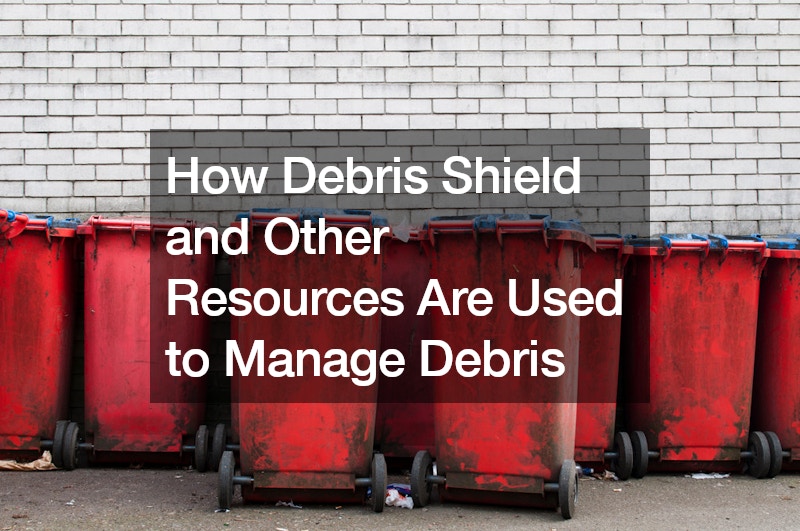
In the discussion surrounding common waste materials in the construction industry, it is crucial to understand the diverse range of debris generated and its impact on sustainability. Construction activities produce a significant amount of waste, necessitating effective waste management strategies to mitigate environmental repercussions and ensure regulatory compliance.
Various types of construction waste require proper identification and disposal methods to minimize adverse effects on the environment. Building materials like insulation, nails, electrical wiring, and roofing, along with debris from site preparation such as dredging materials, tree stumps, and rubble, constitute a significant portion of construction waste. Notably, the disposal of hazardous materials like asbestos, lead, plasterboard, and chemicals requires adherence to strict regulations to prevent health hazards and environmental contamination.
Recycling plays a crucial role in waste management, offering a sustainable solution to reduce landfill burdens and conserve resources. Materials like concrete, bricks, wood, glass, and plastic can be recycled or repurposed for other construction projects, contributing to resource efficiency and cost-effectiveness. Utilizing roll-off containers and crushing rubble for reuse are common practices in the construction industry to streamline waste management processes.
Furthermore, proper disposal of hazardous waste materials, including paints, varnishes, and bituminous mixtures containing coal tar, is essential to prevent pollution and protect public health. Adhering to waste regulations and collaborating with waste management companies ensures responsible disposal practices, mitigating the risk of legal penalties and environmental damage.
Beyond regulatory compliance, promoting sustainability in construction entails raising awareness and fostering a culture of environmental responsibility. Educating construction professionals, including Health, Safety, and Environment (HSE) professionals, about waste management practices is imperative to drive positive change and minimize the industry’s ecological footprint.
Innovative approaches, such as incentivizing recycling and integrating sustainability considerations into project planning, can further enhance waste management efforts in the construction sector. Embracing sustainable practices not only aligns with corporate social responsibility goals but also contributes to a more resilient and eco-friendly built environment.
As construction activities continue to evolve, prioritizing waste reduction and recycling initiatives is paramount for long-term environmental sustainability. Small steps taken at individual construction sites can collectively lead to significant reductions in waste generation and promote a greener construction industry.
In conclusion, addressing common waste materials in the construction industry requires a multi-faceted approach encompassing proper waste identification, recycling initiatives, regulatory compliance, and environmental stewardship. By adopting sustainable practices and fostering collaboration across the construction supply chain, stakeholders can collectively contribute to a more sustainable future.
Now that we’ve covered the common waste materials found in the construction industry, it’s imperative to discuss strategies for efficient waste management. One effective approach is the implementation of debris shields on construction sites.
Debris shields, also known as containment systems, play a crucial role in containing and controlling construction waste. These shields are erected around construction sites to prevent debris from escaping into the surrounding environment. Made of sturdy materials like mesh or plastic, debris shields act as barriers, preventing waste materials such as dust, debris, and small particles from spreading beyond the construction area.
By containing construction waste, debris shields not only mitigate environmental pollution but also enhance workplace safety. They minimize the risk of accidents caused by flying debris and help maintain a clean and organized work environment, promoting productivity and efficiency among workers.
Moreover, debris shields contribute to regulatory compliance by ensuring that construction sites adhere to waste management regulations and guidelines. By investing in shields and other waste containment measures, construction companies can demonstrate their commitment to sustainability and environmental responsibility while safeguarding the well-being of their workers and the communities they operate in.
In conclusion, the effective management of construction waste is essential for promoting sustainability, ensuring compliance with regulations, and enhancing workplace safety. Shields are just one of the many tools available for achieving these objectives. By implementing debris shields and other waste containment measures, construction companies can minimize environmental impact, reduce the risk of accidents, and streamline waste disposal processes.
Furthermore, investing in sustainable waste management practices not only benefits the environment but also enhances the reputation and credibility of construction firms. As the construction industry continues to evolve, prioritizing responsible waste management will be crucial for meeting the demands of a rapidly changing world and building a more sustainable future for generations to come.
.

